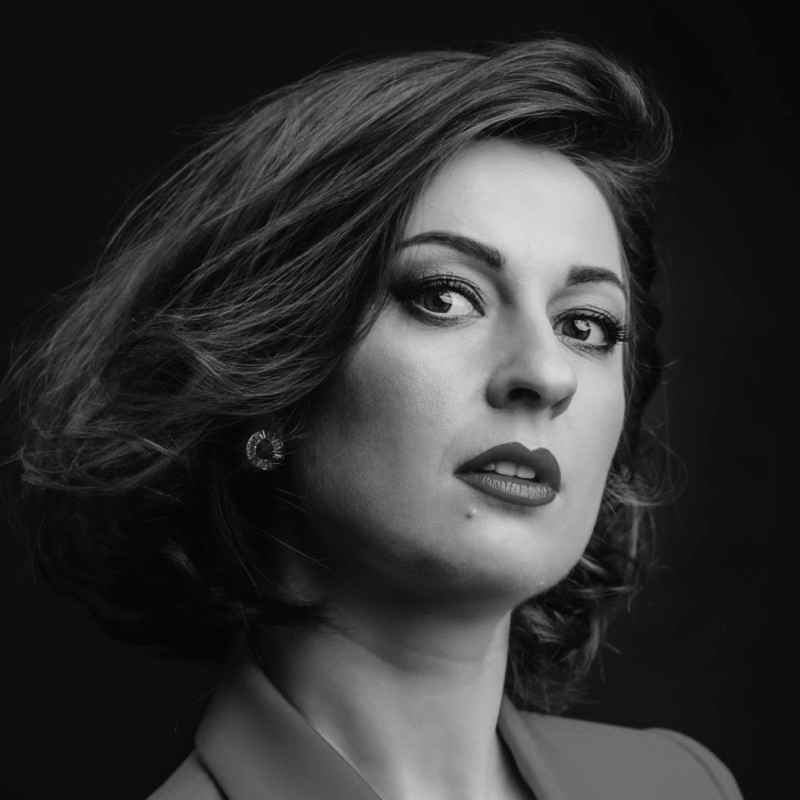Carmen
Georges Bizet
Cast
Credits
Opera in four acts
Libretto: Henri Meilhac, Ludovic Halévy
World premiere: 3 March 1875, Paris
Premiere of this production: 7 June 2018, Polish National Opera, Teatr Wielki, Warsaw
In the original French with Polish surtitles
Older audiences of the Polish National Opera will undoubtedly remember Lech Majewski's splendid classical production of George Bizet’s most famous opera with monumental sets by Janusz Kapusta and costumes by designed by Hanna Bakuła. Twenty-three years after that premiere, the job of staging Carmen for the Teatr Wielki was taken on by Poland’s popular actor and director, Andrzej Chyra. This time round, the Warsaw audience was treated to a completely different and hardly traditional take on the masterpiece of the world opera repertoire.
Chyra enlisted the help of Małgorzata Sikorską-Miszczuk, a dramaturge he had worked with on the staging of an outspreading Polish 21st-century opera, Paweł Mykietyn’s The Magic Mountain after Thomas Mann.
To cast new light on the well-known piece, Chyra and Miszczuk introduced to the opera an enigmatic boy figure and the Devil who seems less and less scary to the young character with each act. He appears to symbolise the fate that seemingly renders the characters helpless. In contrast to the bull/demon, the heroine has wings growing from her shoulder blades.
Georges Bizet was commissioned to compose Carmen by the director of Opéra-Comique in Paris, Camille du Locle. The score was written at the turn of 1874 and 1875. The libretto, based on Prosper Mérimée’s novella, is the work of Henri Meilhac and Ludovic Halévy. Ever since its creation, Carmen has been fascinating dramaturges, writers, and film-makers. She is an undisputed icon of femininity. Sensual, tantalising, passionate, and mysterious, she is also valiant, unpredictable, temperamental, wild, and proud. But, above all, she is tragic. Her name is widely known and inevitably associated with something that you cannot ignore. It is present in every industry: the arts, hospitality, entertainment, business, and IT.
The role has been portrayed by some outstanding singers: Angela Gheorghiu, Elina Garanča, Anna Caterina Antonacci, Małgorzata Walewska, and even Maria Callas, who took on mezzo-soprano parts in the 1960s. The film industry could not resist it either. Over a century ago, in 1918, Ernst Lubitch’s adaptation of Carmen starring Pola Negri opened with a pomp. Other actors to have portrayed the tantalising sex symbol on the silver screen were Maruschka Detmers in Jean-Luc Godard’s iconic 1983 film First Name: Carmen with Beethoven’s music and Rita Hayworth in Charles Vidor’s The Loves of Carmen.
There was little indication that the opera would become a hit after its world premiere in 1875. While the first two acts were well received by the audience, the crowd’s enthusiasm was waning with each subsequent act. When the curtain went down on the fourth one, the atmosphere in the auditorium was chilly, a fact that embittered the composer, who had become more invested in the work than in any of his previous pieces. But there was a person who predicted that the ‘scandalous’ and ‘blasphemous’ opera would become a success. His name was Pyotr Tchaikovsky. In his 1880 letter to Nadezhda von Meck, the Russian composer wrote: ‘I am convinced that within some ten years or so Carmen will be the most popular opera in the world!’ He was not wrong.
Chorus and Orchestra of the Polish National Opera
Władysław Skoraczewski Artos Children’s Choir
Synopsis
Sponsors
-
Ministry of Culture and National Heritage of the Republic of Poland
-
Patrons of the Polish National Opera
Partners of the Opera Academy
-
Partners of the Polish National Opera
-
Media patrons





![[Translate to English:]](/fileadmin/import/media/img/sezon24_25/carmen_2024_tlo.jpg)
![[Translate to English:] Projekt: Adam Żebrowski na podstawie zdj. Łukasza Murgrabi [Translate to English:] Projekt: Adam Żebrowski na podstawie zdj. Łukasza Murgrabi](/fileadmin/_processed_/5/2/csm_CARMEN_B-1_-_plakat_e47b15c31a.jpg)
![[Translate to English:] Fot. K Bieliński [Translate to English:] Fot. K Bieliński](/fileadmin/_processed_/7/b/csm_BIEL_01_6830_0a479db514.jpg)
![[Translate to English:] Fot. K Bieliński [Translate to English:] Fot. K Bieliński](/fileadmin/_processed_/c/2/csm_BIEL_02_5102_c3ee0c3e27.jpg)
![[Translate to English:] Fot. K Bieliński [Translate to English:] Fot. K Bieliński](/fileadmin/_processed_/f/e/csm_BIEL_03_6195_cd6af57db9.jpg)
![[Translate to English:] Fot. K Bieliński [Translate to English:] Fot. K Bieliński](/fileadmin/_processed_/a/3/csm_BIEL_04_6943_0a7c312d14.jpg)
![[Translate to English:] Fot. K Bieliński [Translate to English:] Fot. K Bieliński](/fileadmin/_processed_/e/8/csm_BIEL_05_7153_c2d1e88ad9.jpg)
![[Translate to English:] Fot. K Bieliński [Translate to English:] Fot. K Bieliński](/fileadmin/_processed_/e/2/csm_BIEL_06_6997_14d6c769cf.jpg)
![[Translate to English:] Fot. K Bieliński [Translate to English:] Fot. K Bieliński](/fileadmin/_processed_/e/1/csm_BIEL_07_7121_f89e55edfb.jpg)
![[Translate to English:] Fot. K Bieliński [Translate to English:] Fot. K Bieliński](/fileadmin/_processed_/f/3/csm_BIEL_08_7535_237fc239d4.jpg)
![[Translate to English:] Fot. K Bieliński [Translate to English:] Fot. K Bieliński](/fileadmin/_processed_/0/a/csm_BIEL_09_6798_3cbbd53d6a.jpg)
![[Translate to English:] Fot. K Bieliński [Translate to English:] Fot. K Bieliński](/fileadmin/_processed_/4/a/csm_BIEL_10_7598_560c0e03d0.jpg)
![[Translate to English:] [Translate to English:]](/fileadmin/_processed_/0/0/csm_CARMEN_-_teaser_05395c3752.png)
![[Translate to English:] [Translate to English:]](/fileadmin/_processed_/4/5/csm_CARMEN_-_trailer_f224b05b2f.png)
![[Translate to English:] [Translate to English:]](/fileadmin/_processed_/3/4/csm_CARMEN_-_making_of_b77fdf3038.png)
![[Translate to English:] [Translate to English:]](/fileadmin/_processed_/5/9/csm_CARMEN__Georges_Bizet_-_wywiad_z_rezyserem_opery_Andrzejem_Chyra_1794df445e.png)
![[Translate to English:] [Translate to English:]](/fileadmin/_processed_/c/0/csm_Ruch_w_Wielkim_-_spotkanie_przed_opera__Carmen__bbda44254a.png)
 Monika Ledzion-Porczyńska
Monika Ledzion-Porczyńska  Teodor Ilincăi
Teodor Ilincăi  Andrii Kymach
Andrii Kymach  Gabriela Legun
Gabriela Legun  Lukas Jakobski
Lukas Jakobski ![[Translate to English:]](/fileadmin/import/media/img/ludzie/spiewacy/Kamil_Zdebel_24_-_kwadrat.jpg) Kamil Zdebel
Kamil Zdebel  Magdalena Stefaniak
Magdalena Stefaniak  Anna Bernacka
Anna Bernacka  Paweł Trojak
Paweł Trojak  Piotr Maciejowski
Piotr Maciejowski  Gosha Kowalinska
Gosha Kowalinska  Arnold Rutkowski
Arnold Rutkowski  Liam James Karai
Liam James Karai ![[Translate to English:]](/fileadmin/_processed_/a/7/csm_Ewa_Tracz_fot._Karpati___Zarewicz_-_kwadrat_24_d08740d6f3.jpg) Ewa Tracz
Ewa Tracz ![[Translate to English:]](/fileadmin/_processed_/6/f/csm_remigiusz_lukomski_kwadrat_05aa478a8d.jpeg) Remigiusz Łukomski
Remigiusz Łukomski  Szymon Raczkowski
Szymon Raczkowski  Aleksandra Łaska
Aleksandra Łaska ![[Translate to English:]](/fileadmin/_processed_/5/b/csm_damian_wilma_2024_-_kwadrat_bf794b4cfc.jpg) Damian Wilma
Damian Wilma  Tomasz Madej
Tomasz Madej ![[Translate to English:]](/fileadmin/media/img/ludzie/dyrygenci/patrick_fournilier_fot_arch_artysty_-_kwadrat.jpg) Patrick Fournillier
Patrick Fournillier  Andrzej Chyra
Andrzej Chyra ![[Translate to English:] Barbara Hanicka [Translate to English:] Barbara Hanicka](/fileadmin/_processed_/0/b/csm_Hanicka-700_6f4f44da3d.jpg) Barbara Hanicka
Barbara Hanicka  Magda Maciejewska
Magda Maciejewska  Bartosz Nalazek
Bartosz Nalazek ![[Translate to English:]](/fileadmin/_processed_/1/9/csm_Jacek_Przybylowicz_370cb_ad43bcef0c.jpg) Jacek Przybyłowicz
Jacek Przybyłowicz  Michał Jankowski
Michał Jankowski  Małgorzata Sikorska-Miszczuk
Małgorzata Sikorska-Miszczuk  Michał Kurkowski
Michał Kurkowski  Mirosław Janowski
Mirosław Janowski  Danuta Chmurska
Danuta Chmurska  Marek Bryczyński
Marek Bryczyński 








